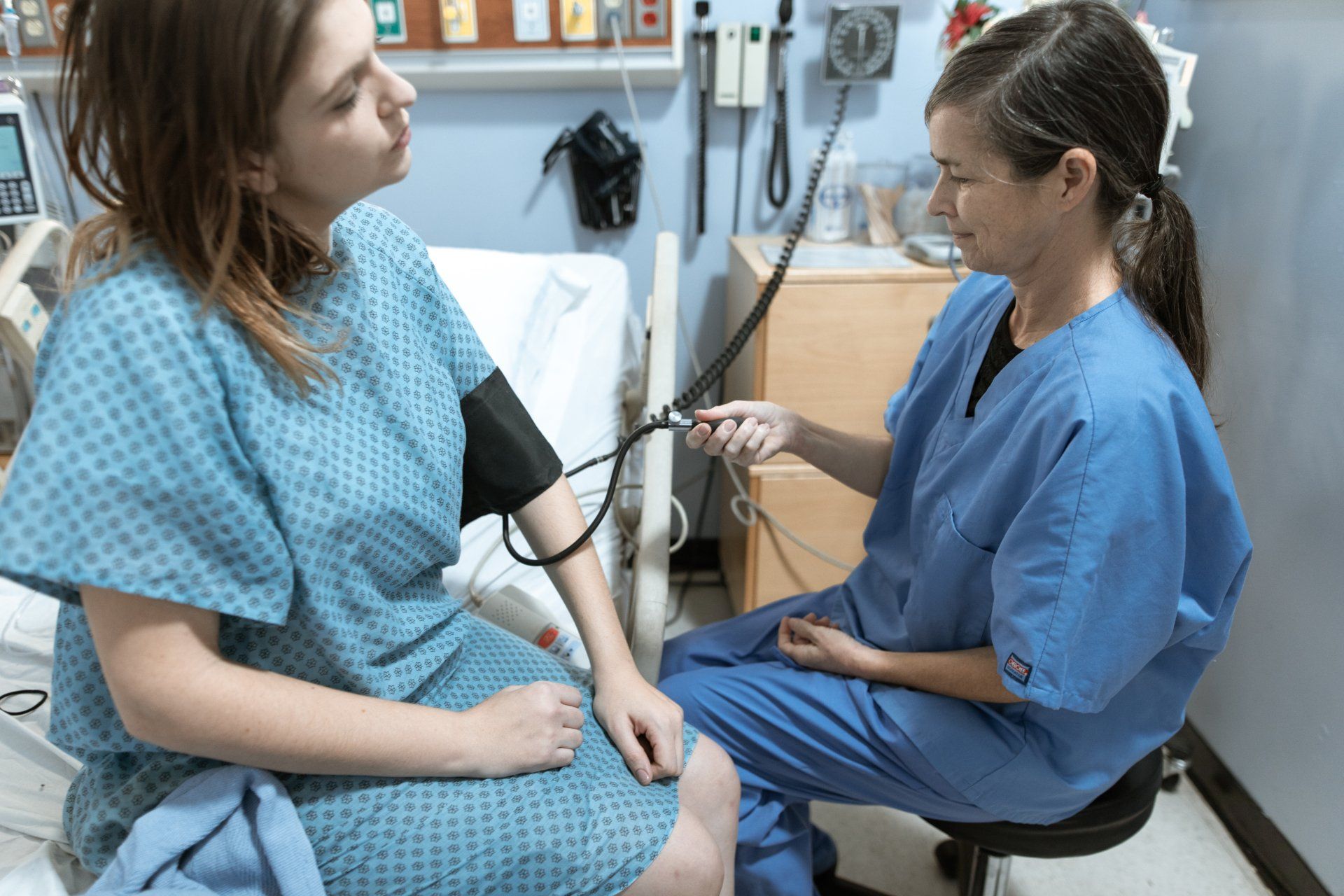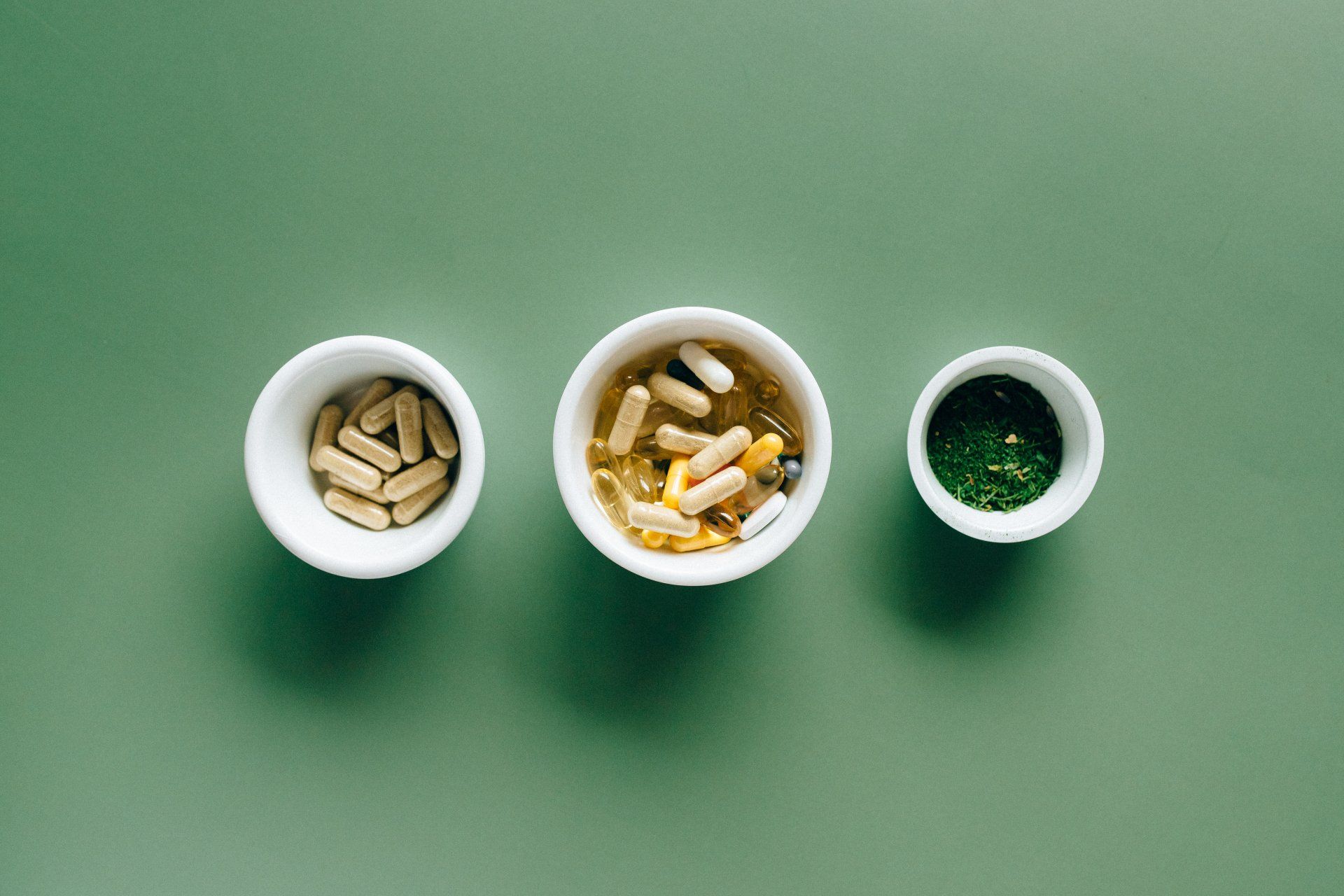The Importance of Women's Health
Why Women's Health Is Important
By Lori Poston

An old expression says, "Women are the backbone of the world."
Nothing could be truer. Women are the nurturers, the caregivers to the sick and elderly. Women do the bulk of the childcare and household work and are the glue that holds the family and the community together. Add in women's economic and political role, and you see how strong and supportive this "backbone" really is.
Here is the caveat, while women are busy taking care of everyone else, they often forget to put their names on the list!
Annual physicals get postponed.
Dentist appointments take a back seat to their kids' needs.
Annual mammograms tend not to be so annual.
Work, childcare, elder care, and household duties leave little time for women's health.
We as a society need to change this scenario. Women, partners, families, work environments, and societal expectations must be adjusted.
We all need to heed the instructions from flight attendants, "put your own facemask on first, so you can help others."
Studies have shown that women juggling all these roles experience a much higher stress rate. This stress can manifest in many ways, such as depression, insomnia, heart disease, high blood pressure, and stroke. In addition, postponing annual pap tests and mammograms can lead to more advanced cancers.
Here are some of the most common health issues facing women:
Heart Disease/Stroke
According to the CDC, heart disease is women's leading cause of death [1].
Heart disease refers to several heart conditions, including coronary artery disease and heart attack. Such conditions include blood pressure and high cholesterol, and are exacerbated by smoking, stress, and obesity. While you may assume heart disease is more of an issue for men, in reality, almost as many women as men die annually in the United States from heart disease. This number comes out to be approximately one in every five female deaths.
Poor heart health and conditions like high cholesterol and smoking also contribute to the high number of strokes women experience yearly, with strokes being the 5th leading cause of death for women in America [2].
It is essential to know the symptoms of heart disease in women as these symptoms can differ from those of men. The most common symptoms of heart disease are dull and heavy neck, jaw, or throat pain and upper back or abdomen pain. These symptoms may present when a woman is at rest or active. Other symptoms may include nausea, vomiting, and fatigue. Like Type ll diabetes, heart disease may not present itself until it becomes more serious. Therefore, a woman may experience the above symptoms, heart arrhythmias, or palpitations at this time.
Breast Cancer
According to the American Cancer Society, Breast Cancer is the 2nd most common form of cancer found in women and one of the leading causes of death in women[3].
The best defense against breast cancer is early detection. A monthly breast self-examination and a yearly mammogram are essential in detecting breast cancer before it can spread to other body parts. Unfortunately, women are not taught how to do a monthly self-breast exam. If a woman knows her own body, she may be able to detect changes or abnormalities before they become more severe issues. Teaching teenage girls the importance of self-exams and reducing the fear many women have about doing this quick 2–3-minute check once a month could save lives.
It is important to note that not all breast cancers will present symptoms, which further underscores the need for early detection as someone may have breast cancer and be unaware of it.
Diabetes
Diabetes is also a chief concern for women. Complications caused by diabetes include blindness, kidney disease, depression, and an increased risk of heart disease [4].
Yearly physical examinations and blood tests to assess your A1C (blood sugar) level are crucial in detecting this disease early enough so that you can control your symptoms and avoid more serious complications. To better detect diabetes, women should also be knowledgeable about the symptoms of diabetes. These symptoms include increased thirst, urinating frequently, unexplained weight loss, weakness, exhaustion, mood changes, irritability, sores that are slow to heal, and vision changes.
The symptoms of type II diabetes may not be as common. Many people can live with type ll diabetes for years and not know it, which is another reason why it is so important for women not to postpone their own healthcare exams.
Depression and Mental Health
While both men and women experience depression and mental health struggles, women experience depression almost twice as often as men do, according to the Mayo Clinic [5].
Depression can make motherhood and family life even more challenging and strain relationships. Consulting with a therapist or doctor can help to combat this disorder. In addition, your doctor may recommend various medications available for treating depression.
Gynecological Health
Gynecological Health covers diverse issues such as pregnancy, cervical cancer, ovarian cancer, pelvic infections, infertility, reproductive problems, pelvic pain, sexually transmitted diseases, and endometriosis. It also covers urological issues such as incontinence, menopause, sexual health, etc.
Menopause is still an under-researched and discussed topic. However, an average of 27 million women between the ages of 45 and 64, or 20% of the American workforce, experience menopause each year, according to the Society for Human Resource Management[6]. In addition to insomnia and hot flashes, women may also experience brain fog, dry skin, and muscle aches.
Incontinence issues are also a common issue. Researchers have found that one in four women experience involuntary urine leakage with aging. Unfortunately, the prevalence of this problem increases with age, with as much as 75% of women over 65 reporting urine leakage[7].
In addition, after menopause, bone mass also decreases and thus increases the possibility of osteoporosis.
Menopausal issues also include Sexual health problems. While this is a topic finally getting the attention it deserves, many women suffer from dyspareunia (pain with intercourse), which affects relationships and self-esteem. The decrease in the hormone estrogen causes this. Helping women overcome dyspareunia includes options such as hormone replacement therapy, silicone vaginal dilators, and lubricants. As mentioned before, menopause is still an under-researched and under-discussed topic.
Talk with your gynecologist, urogynecologist, pelvic floor physical therapist, or health care provider about any health conditions you are experiencing.
Violence Against Women
Violence against women is a topic that is both underreported and underfunded. Unfortunately, domestic violence affecting the family is a common problem in the United States. As many as ten million people are affected by domestic violence each year. The numbers work out to 25% [8] of women and close to 10 percent of men being victims of domestic violence. In addition, this violence corresponds with a higher rate of depression and suicidal behavior. Sadly, only about 34% of people injured by their partners receive care for their medical injuries.
Studies have also shown that about one-third of people who are abused as children will become abusers themselves.
Children and adults with care and support needs are more likely to be at risk of domestic abuse. This abuse may manifest in physical as well as emotional abuse.
Summary
We must address all areas of women's health in our society. When women are not at their best physically and mentally, their families, relationships, and jobs suffer. And the lack of access to health education and services all play a significant role in the health of the individual, the family, and the community. In addition, we must acknowledge women's many roles economically, politically, and socially.
We need to make healthcare a top priority. Education and supportive work environments that encourage women to take time off for doctor's visits, as well as changing societal mores, all play an essential role. Let's never forget that the "backbone" holds everything together.
Sources:
[1] https://www.cdc.gov/women/lcod/2017/all-races-origins/index.htm
[2] https://www.utmbhealth.com/services/neurology/procedures-conditions/stroke/stroke-facts#:~:text=Stroke%20is%20the%20fifth%20leading,cause%20of%20death%20for%20women.
[3] https://www.cancer.org/cancer/breast-cancer/about/how-common-is-breast-cancer.html
[4] https://www.healthline.com/health/diabetes
[5] https://www.mayoclinic.org/diseases-conditions/depression/in-depth/depression/art-20047725
[6] https://www.axios.com/2022/11/23/the-growing-menopause-at-work-market
[7] https://www.obgyn-care.net/blog/female-urinary-incontinence-is-more-common-than-you-think#:~:text=Urinary%20incontinence%20can%20often%20seem,experience%20some%20involuntary%20urine%20loss.
[8] https://jech.bmj.com/content/58/7/536#ref-2
Thank you for reading Patient Education Essentials, the Write Shift RN blog.
Disclaimer: This article was written as a guest post for Write Shift RN LLC's blog. The information in it may not be wholly fact-checked or edited, allowing the reader to see the writer's work and skills firsthand. This information is not intended as medical advice. It is for informational and educational purposes only. Always talk to your doctor or other qualified healthcare providers about any questions or concerns you may have regarding medical conditions.











